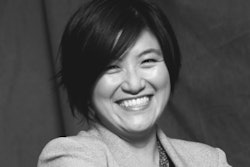In 2010, Spelman College celebrated its highest alumnae giving numbers in the institution’s history — 39 percent. This figure is up from 31 percent in 2009. A giving percentage at this level is the envy of colleges and universities across the country regardless of their institution’s racial history.
In order to reach 39 percent, Spelman worked hard to educate its alumnae about the importance of giving back to the institution. Spelman graduates understand that their alma mater can garner more individual, foundation and corporate support because it is evident that alumnae believe in the institution. Alumnae also understand that a strong showing of support factors into the institution’s reputation. For example, alumni giving is one of the measures used in U.S. News and World Report’s annual college rankings. Spelman is considered one of the top liberal arts colleges in the country and is ranked as the top institution in the magazine’s HBCU rankings. U.S. News considers alumni giving a factor in its rankings because it is an indication of student satisfaction.
One of the strengths of Spelman’s approach to garnering more alumnae support is enlisting the services of active and prominent alumnae to reach out to other alumnae. These women, and the institution’s administration, have created a culture that makes giving back year after year an institutional norm. Recently, I was talking with Spelman alumna Vida Avery and she told me of her own efforts to increase support among her Spelman “sisters.” She called every Spelman graduate she knew with a well-crafted argument in favor of supporting the institution. She considers it her obligation or duty to support the institution that fostered her success.
A few years ago, I wrote a book titled Fund Raising from Black College Alumni: Successful Strategies for Supporting Alma Mater (with Dr. Sibby Anderson-Thompkins). While researching the book, we interviewed and surveyed many Spelman alumnae. We heard a consistent theme in their responses — reaching back and helping the next generation. Spelman women used phrases such as “reach back and pull a sister up” and “reach across the bridge.” They had fond memories of their institution and wanted to ensure its future success.
HBCUs, and small colleges overall, would do well by following Spelman’s example. They have created core academic programs that provide them with a market niche — especially in the sciences. They also begin talking about their students’ obligation to the future of the college immediately. Spelman women learn early on that it is important to support Spelman with their actions and wallets. They know their support enhances the national reputation as well as the internal strength of the institution. Giving back is part of the ethos of the Spelman campus.
Sometimes, I hear those who work in the area of fundraising or alumni giving at HBCUs talk about Spelman’s success as unattainable. It is not. The institution hasn’t always had alumni support of this caliber. It worked hard to achieve this level and should be seen as an attainable model by other institutions.
An associate professor of higher education at the University of Pennsylvania, Dr. Gasman is the author of “Envisioning Black Colleges: A History of the United Negro College Fund” (Johns Hopkins University Press, 2007) and lead editor of “Understanding Minority Serving Institutions” (SUNY Press, 2008).



















